7. Alpa Depani
Architect and Artist
London - UK
‘Thereness’

Next up is Alpa Depani, an architect and artist who’s wide ranging interests make for a thoroughly enjoyable conversation.
We first came across Alpa as a member of the first cohort of Public Practice; an initiative that places architects and designers into local authorities . Following her initial placement in the London Borough of Sutton, Alpa went on to complete a placement in the second cohort of Public Practice, this time slightly closer to home in Waltham Forest. Following her year long placement, Alpa continues to work with Waltham Forest as Placemaking Lead.
Alongside her work with the Local Authority, Alpa is an active educator. For three years she was a first year tutor on BA Architecture at London Metropolitan University focussing on skills and ways of approaching design thinking. She also taught there on the Interiors BA and Foundation courses. Alpa taught a year each on BA and MA Architecture courses at Brighton University alongside Andre Viljoen looking at urban food production. Alpa also taught at Central St. Martins, on the MA Professional Practice module and ran Design Studio 3 on the BA Architecture course there alongside Douglas Murphy. The unit focused on the sequence of blue and green spaces found along the Lea Valley, with students asked to develop projects around the themes of production, dwelling and nature.
Of further note, was a month long research trip to New York, Tokyo and Hong Kong in 2017 as part of a Fellowship awarded by the Winston Churchill Memorial Trust. Alpa undertook a series of urban explorations, working with maps, sketches, writings and sounds to understand community driven public spaces. This work directly fed into numerous exhibitions and projects, including the publication of her book, ‘Bottom Up Approaches to Small Scale Public Realm in Global Cities’, as well as a themed issue of her self-published zine, ‘ROMP’. A fantastic publication that collects together Alpa’s musings on anything from New York as the ‘City of Signage’ to the data surrounding the gender pay gap. You can order a copy of the zine here.
It’s hard to assemble everything Alpa is up to. As you can imagine, there’s a lot going on. You can follow a more up to date log of her work here. A constantly shifting and evolving reference, littered with beautiful drawings, analogue photos and perceptive anecdotes. Enjoy.

How many books do you currently have in your office?
I have no idea and I doubt I would ever count. So we’ll never know! I’m a bit more stringent on what comes in now as I’m starting to run out of space. In terms of architecture books, I think there’s about 100. Actually, that’s a gross exaggeration. There’s probably about 50. There are a lot of novels, art, random stuff I pick up when I’m abroad.
I get a lot of books from the library. There’s always 20 or 30 books lying about from various libraries - in and out. And because all the libraries are closed, I’ve got a massive collection of books that are not mine. Homerton library is great for fiction, which I probably read more than non-fiction. I also get a lot of stuff from London Met library. There’s a huge art collection and lots of books about making. They have the original planning application for the Barbican! Not in the archive, in the library! I took it out as a student but I think it’s since been stolen as I tried to look for it when I went back to teach.
When I studied there the architecture school was in Highbury, then it merged with the art school and moved to Aldgate and everything became more interconnected, it was brilliant…Central House was a wonderful place to teach, though sadly didn’t last long.
I remember looking around that building and it was pretty amazing; photography in the basement, pattern making on the first floor, architecture on the fourth…You really got an idea of how students could and should collaborate.
Totally! It’s a shame to have lost that building, but after moving again to Calcutta House it was great sending students upstairs to the library knowing there was a book for any project.
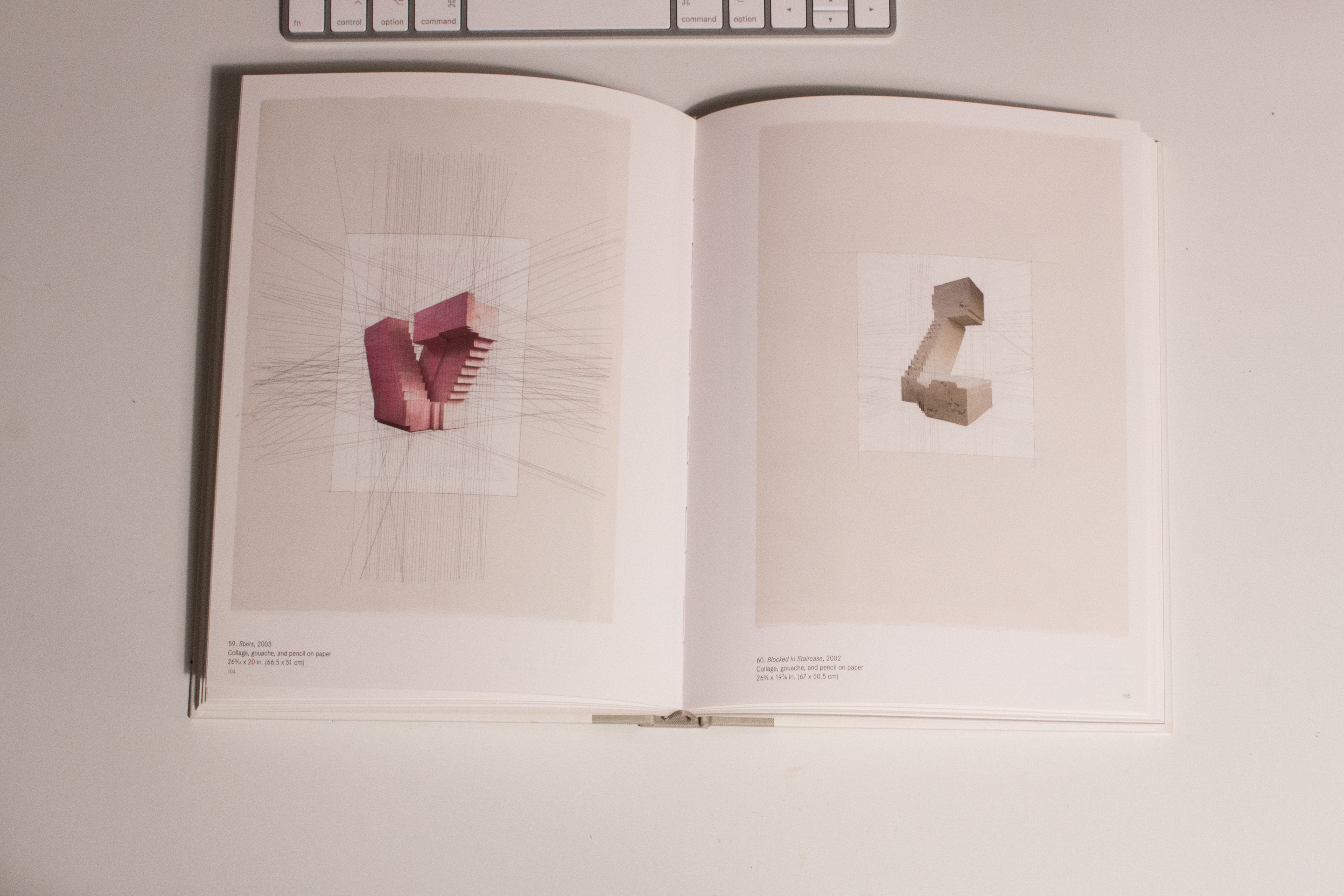
“I’m always trying to get students to really notice graphics in everyday things, to get them thinking about how they communicate ideas; I’ll also always show students the beautiful ‘Drawings’ by Rachel Whiteread.”
Is there anything particularly from your time teaching that you are forever recommending?
Definitely a couple. One is ‘Experiencing Architecture’ by Steen Eiler Rasmussen, which is brilliant. The other is ‘Townscape’ by Gordon Cullen. They use really plain but still poetic language and they’re well illustrated. ‘Townscape’ is especially good to dip into because the sections are small. It’s inspiring, ‘Immediacy’, ‘Thereness’…I love the terms that Cullen uses. I’ve always been interested in urbanism as much as individual buildings, so I’ve got a real soft spot for these books and this era of writing about cities, people like Jane Jacobs, Christopher Alexander and William H Whyte. I’ll always recommend ‘Constructing Architecture: Materials, Processes, Structures’ by Deplazes. It really is excellent and not a million miles from ‘Townscape’…just placed through a rigorous Swiss filter.
I’m really into graphics. I’m always trying to get students to really notice graphics in everyday things, to get them thinking about how they communicate ideas; I’ll also always show students the beautiful ‘Drawings’ by Rachel Whiteread.
And because I went to London Met, I’m forever banging on about Florian Beigel. I bought this, ‘Architecture as City: Saemangeum Island City, Korea’ when I was in Seoul on an exchange during Diploma. We were lucky enough to be shown around Paju Book City by Florian and Philip Christou whilst we were there. It’s a slightly strange place entirely dedicated to book publishing just outside Seoul. We met them there in the morning as Florian was just finishing his breakfast of waffles and ice cream. It was a really special trip.
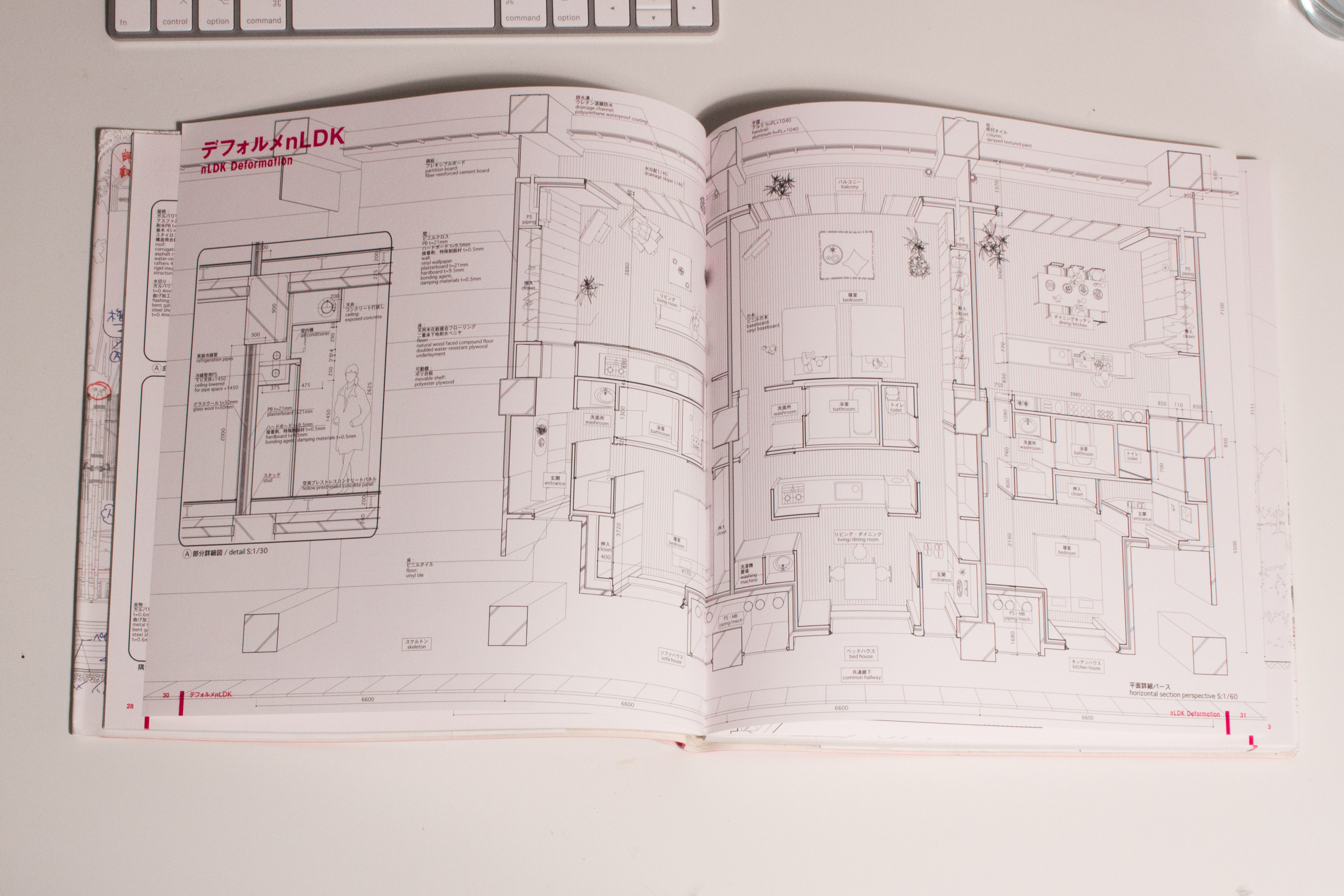
Finally, ‘Atelier Bow: Wow - Graphic Anatomy’ for their beautiful CAD drawings. I think it’s important to show students that CAD drawings can be full of character too, that they can show activity and habitation.
That’s interesting, because at University you always get told to draw by hand in first year, and you don’t really get told about how drawing on the computer can also be expressive and beautiful.
Exactly. I do agree with developing hand drawing first, but it’s important to show that CAD drawings can be accurate, and expressive. That’s what Atelier Bow Wow do so well in these drawings.
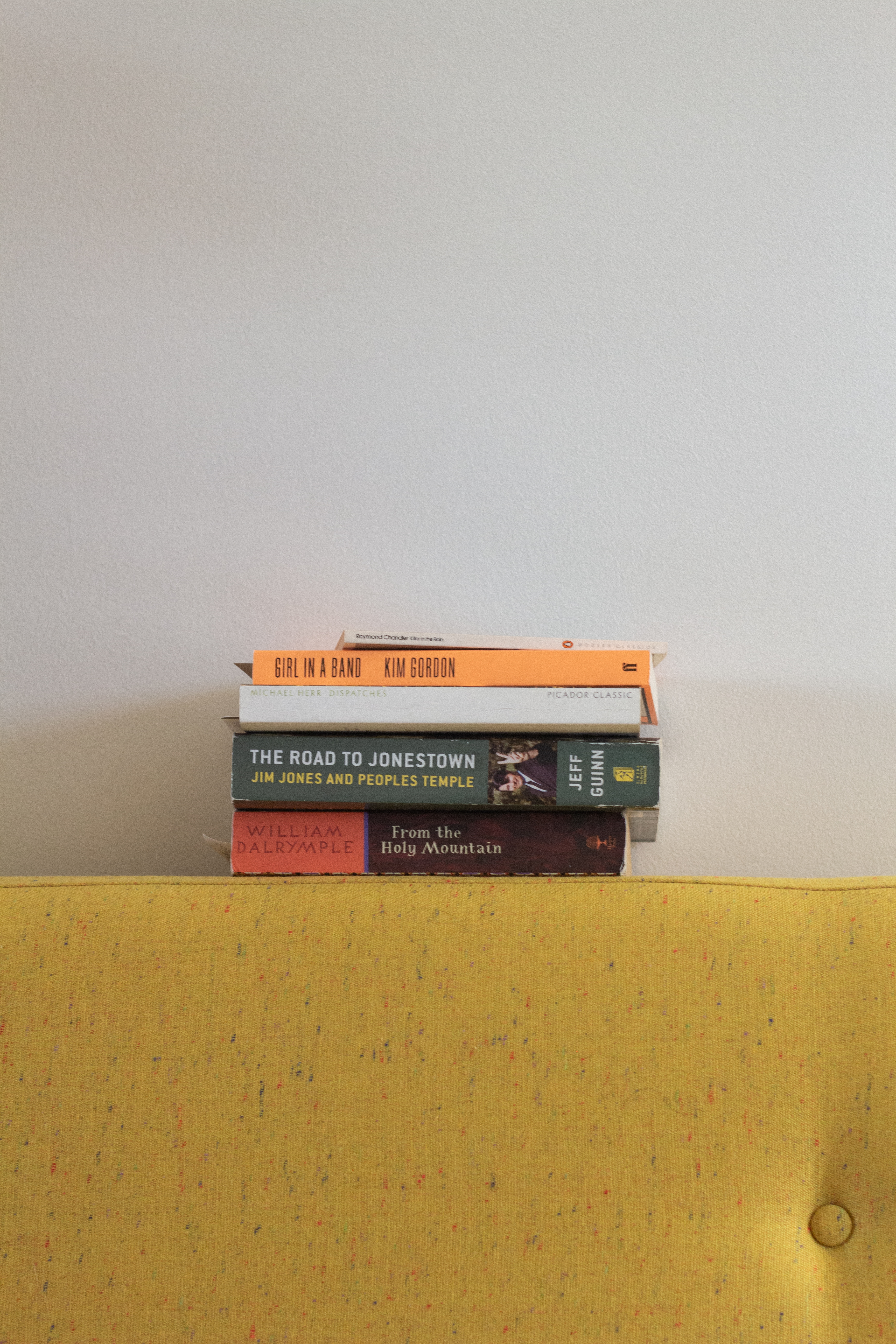
Where do you store them, and how are they organised?
There is a bit of logic and order. I realised, as someone who has a lot of stuff, that everything needs to have its place. It can be messy, just as long as you know where things are.
The top shelf in my study is all novels, with one end being all short stories. In the middle there’s mostly architecture books, into graphics, then into graphic novels. And then a few more architecture books, catalogues, a few of my own sketchbooks. Then small art catalogues and in the hallway bigger catalogues and a new section, novels, but very much novels rooted in a specific place. During lockdown I started collecting books on specific places, a small, desperate attempt to try and pretend I was away somewhere. I’ve been reading up on a lot of colonial stuff recently, so there’s a few books on Sri Lanka and India. Then in the living room, there’s a small poetry section. Books I’m going to read next, maybe. Current books are on the sofa, because I’m always reading a few at a time. At the moment I’m having a big popular culture moment. And then gardens, places…
Places in terms of…?
So, not novels but books about specific places. For example a beautiful book on Romney Marsh. One about Dungeness. Another that is about the TV Tower in Berlin and its use as a graphic image in Soviet popular culture; anything from stamps, adverts, packaging…I picked it up in Berlin.

I really enjoy getting books from a specific place. That Arosa book is from that town in Switzerland when I was there. All of the Korea books are from my time in Seoul. A lovely book of short walks around Bombay, which is where my mum grew up. I love getting books from a place, about that place.
Do you find you get them at the beginning of the trip, or at the end?
Whenever really. When I first went backpacking on my own in Mexico, 11 years ago, I picked up that book about Jose Posada, a Mexican engraver I hadn’t heard of before at the start of the trip. He wasn’t considered an artist in his time because his images were for tabloids but he pretty much popularised the Mexican Day of the Dead imagery that is almost kitsch now….anyway I only had a scruffy backpack, which was really full so I ended up holding it on my lap on all the long bus journeys …
I went to Mexico again last year and visited the National Museum of Art in Mexico City. On my way out I saw there was a little exhibition on about Carlos Mérida who I’d not heard of before. He was a painter and muralist inspired by folk traditions and he also got into designing costumes and sets and choreographing performances. It was a really brilliant exhibition on an artist who’s not well known here so I was glad I managed to pick up the catalogue, even if I can’t read any of the Spanish text.
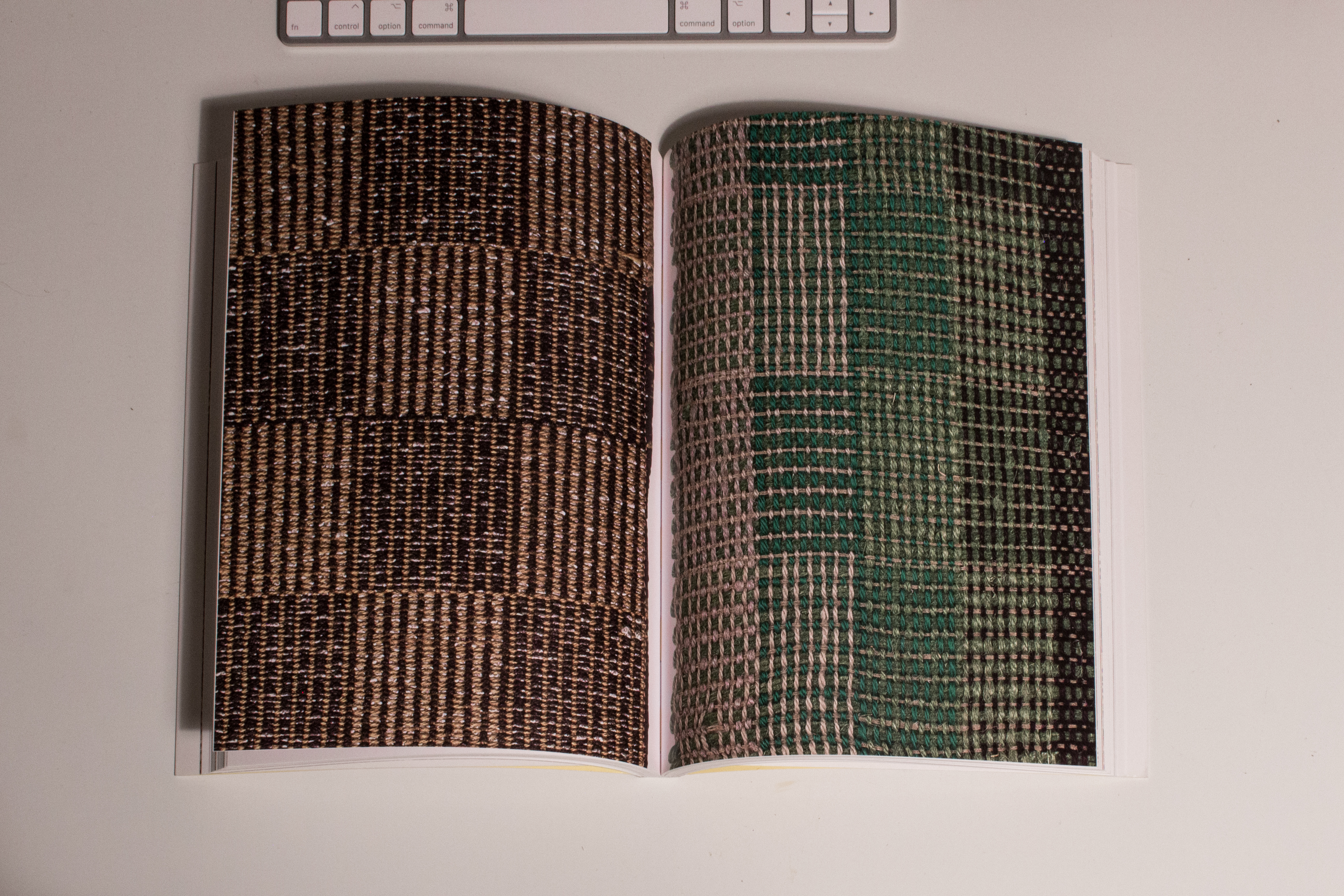
“It’s a catalogue of a brilliant exhibition that was on at the Guggenheim - all about the influence of Mexico on the work of Josef Albers. It’s a beautiful book with photos and collages. It really made me realise that this book should be Josef and Anni Albers in Mexico; it became clear how much she was influenced by their trips as well. The crossover of their work is huge.”
I think that’s a really beautiful thing. It’s amazing the resonance of buying a book in a particular place. It harks back to that memory, you can really remember that specific time and place.
Absolutely. That’s why I enjoy being surrounded by them. It’s a bit depressing when you pick something up and you think ah yes, here’s one I bought off Amazon. It’s much better to be reminded of a particular time or place. I think that’s why I also buy a lot of catalogues; it reminds you of the show. The writing’s generally good, the images are always excellent and perhaps most importantly, it reminds you of walking around and seeing things in real life.
So this is from the last time I went to Venice. It’s a catalogue of a brilliant exhibition that was on at the Guggenheim - all about the influence of Mexico on the work of Josef Albers. It’s a beautiful book with photos and collages. Not long after, the exhibition on Anni Albers was on at the Tate. It really made me realise that this book should be Josef and Anni Albers in Mexico; it became clear how much she was influenced by their trips as well. The crossover of their work is huge. She’s in a bunch of the photos and I think she took a lot of them too.

“I also find it really frustrating that loads of glossy mags are calling themselves 'zines. That’s not a ‘zine, it’s a glossy mag! I love being able to see the craft of a fanzine, which I think is why I love those Modern Dog posters.”
What has been the most influential book throughout your time practising?
Probably the book I look at the most is this, ‘Modern Dog’, a collection of posters by Modern Dog who are a design agency. They were based in Seattle in the 80s/90s, creating DIY posters and prints, using all kinds of equipment, letraset, photocopies, acetates, and so on. I find their style really appealing. Their whole ethos fits with the music from that same period too labels like Dischord Records, Sub Pop, Touch and Go, or SST a bit earlier. Everything is DIY. There’s a great book on that era of music called ‘Our Band Could Be Your Life’.
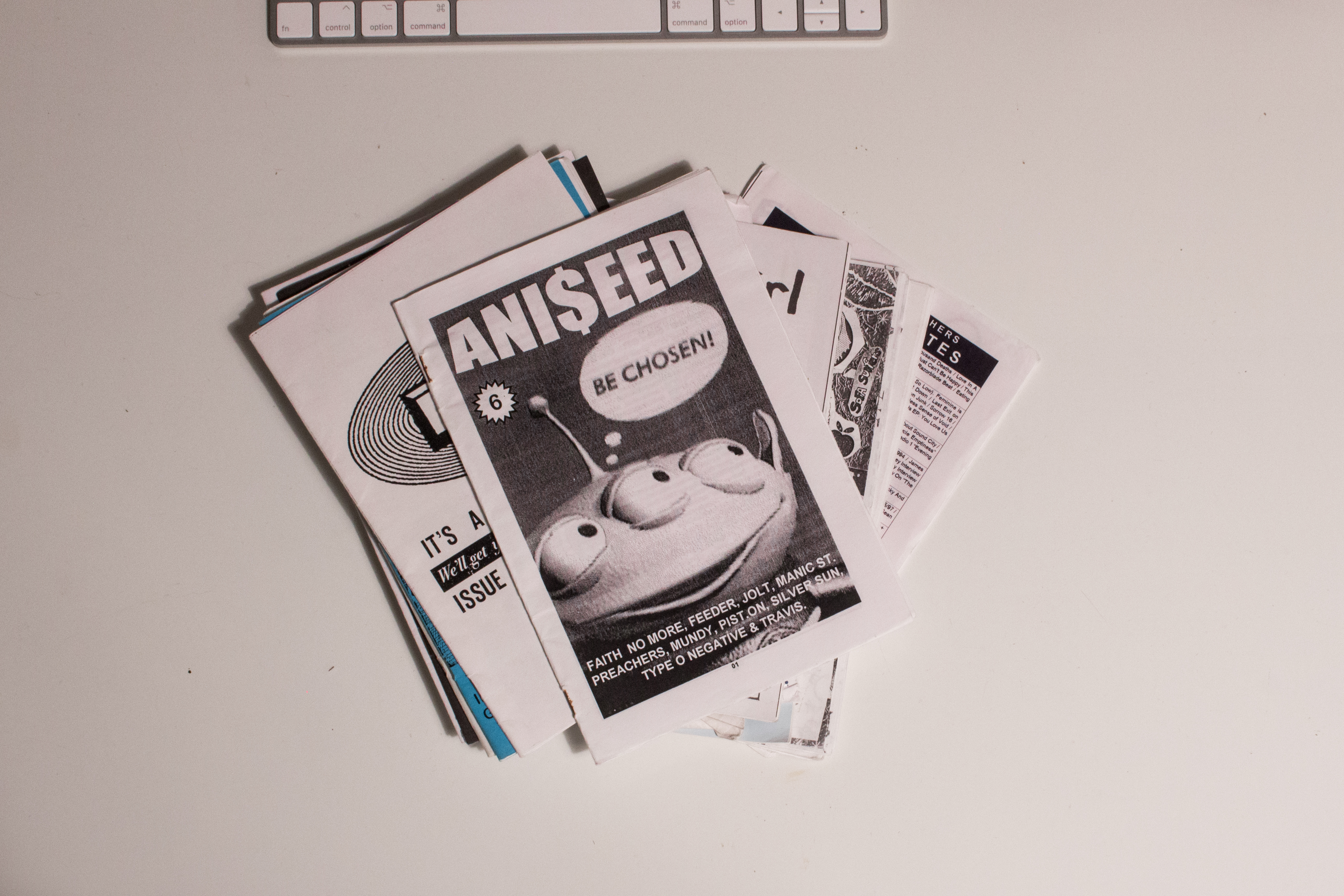
And did that influence the Zine a lot?
In a way. What really influenced the ‘zine were the fanzines I used to buy when I was a teenager. I think that’s why I do the ‘zine now…because I really wanted to do it back then but just never got it together. It’s funny to me that something so labour intensive was considered immediate at the time. I also find it really frustrating that loads of glossy mags are calling themselves 'zines. That’s not a ‘zine, it’s a glossy mag! I love being able to see the craft of a fanzine, which I think is why I love those Modern Dog posters. You understand someone cut it out with a scalpel, they stuck it down, they made a screenprint. I really enjoy knowing that a lot of making was involved.
They were also very funny - the titles and content were often so silly and irreverent. Humour is important. So much of writing on art and especially architecture is so po-faced. That’s why I also loved the Face magazine, it really mixed high and low culture with humour and seriousness. It was a massive influence on me growing up. I would highly recommend Paul Gorman’s book about the Face. (He also curated the Somerset House exhibition that featured ROMP!)
Do you find the zine has led you you to a lot of making?
In my own way, yes. I really enjoy controlling the whole process and making everything by hand. When I do drawings, or competitions, I like the idea that the imagery looks handmade, even if you end up doing parts of it on the computer. I feel every drawing has to have something tactile about it. I’ve never been a big CGI person. That’s why I love the Smithson’s and their drawings. I don’t have it here, but ‘The Charged Void’ has some great drawings in it. You can really feel the deliberation and craft in the drawings. They feel hand-made, but really precise, and that’s something that I really like.
And how are you working with books? Do you take notes, annotate, read aloud, draw…?
Post its! And then there’s the wall…whirling around. It always feels like the thing you’re interested in and looking at, somehow becomes relevant at the point you need it. The right image always seems to be there. Whenever I start a project, I’ll always take a quick look at Modern Dog, just for graphic sensibility. I often find it really useful looking at material that’s not architecture. I’m really a popular culture person, so I will always turn to fiction or popular culture references. Monographs aren’t really my thing.
Is there anything that you found particularly useful during your time at Public Practice and the Local Authority?
It’s not glamorous at all, but the ‘Essex Design Guide’. The original Essex Design Guide, produced in the 70s was actually quite pioneering. It’s definitely of a style, and very Essex, but it’s so detailed with its content.
…And the drawings aren’t dissimilar to those in ‘Townscapes’ by Cullen…
Exactly. It’s of an era, but it’s still held up as an exemplar. I’m referring to it at the moment as I’m doing a bit of policy guidance; an update to the Urban Design Guide for Waltham Forest. Although it’s 10 years old, it is pretty comprehensive, just lacking design literacy. I’m trying to make sure all the graphics are coherent, so that the look of the document conveys the same message about high quality design.

Where do you find the books you collect?
I get a lot from the library. I also pick up a lot of second hand books, galleries, and as I mentioned, I like getting books when I’m abroad. By now a lot of my friends and family know I’m into books, so I get a lot as presents, especially from my best friend. It’s similar in that sense to buying a book from a specific place, I’ll always remember it’s from him.
If you could re-discover one book, what would it be?
I think it would probably be a novel. When I went to Japan, I picked up ‘Sanshirō’ from Daunt Books as it was in the Japan section. Sōseki is a classic Japanese author, not that I knew this at the time. I’d started the trip in New York and Tokyo was second on my itinerary, so I waited until I was there to start reading it. It’s set in early 1900s Tokyo, a totally different place to what it is now, but the writing feels vey contemporary. It’s such a beautiful story, capturing human emotion and the experience of leaving home. Classic coming of age I suppose. When I was reading it in Japan, where I was often alone, at a moment when I felt very much in a foreign situation (not that I felt this to be a bad thing), it was comforting to read a book from that specific culture, where the themes were so universal…I think that universality struck me even more than it might have done otherwise.
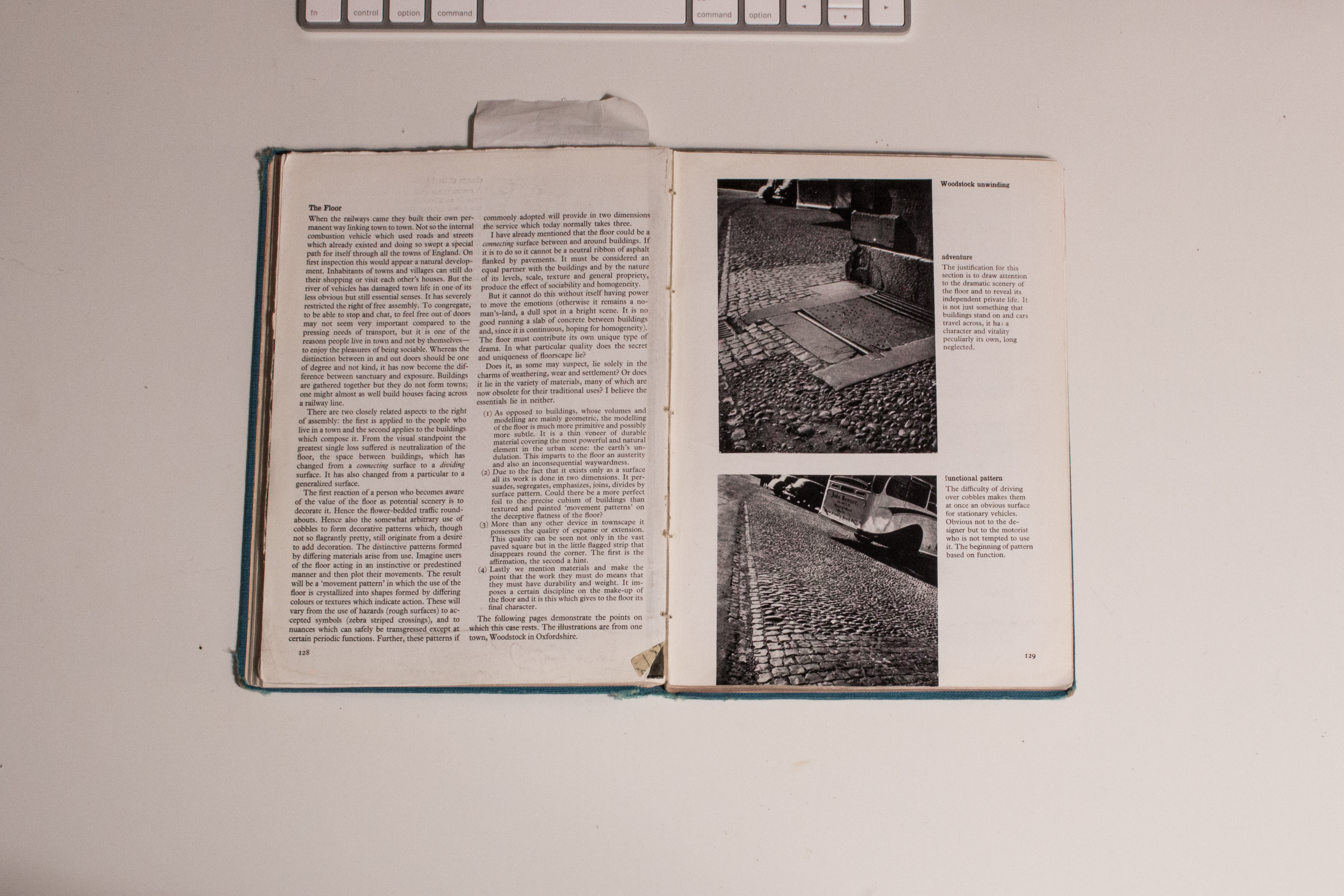
“Writing is a big one for me, especially when I’m teaching. Architecture students often feel they have to write in this slightly pseudo, trying-to-be-academic, trying-to-be…I don’t know what it is…I love ‘Townscape’ because it’s just clear direct language used carefully.”
What book would you recommend every young, aspiring architect to read?
Probably ‘Townscape’ by Cullen. It’s got everything; really succinct and clear writing, beautiful sketches, coherent diagrams, great photos,… everything is so well considered. I especially like the analogue photography (coming back to that interest in making once again). He’ll only have had so many photographs on his reel, so he had to really think about every image. He would have thought exactly about the photo he was going to take. I love that - the craft is really evident.
Writing is a big one for me, especially when I’m teaching. Architecture students often feel they have to write in this slightly pseudo, trying-to-be-academic, trying-to-be…I don’t know what it is… There’s just this way of writing that I come across a lot. I love books like this, because it’s just clear direct language used carefully.
It’s also great because you can just dip in and out of it and get inspired. For example, you know this and that image are obviously trying to say something about sculpture. Maybe I would have understood that if I’d seen the photos separately, without a title, maybe I wouldn’t. But, it makes me start to think that I can start to put images together like that, to try and create ideas.
All photography by Tim Lucas
